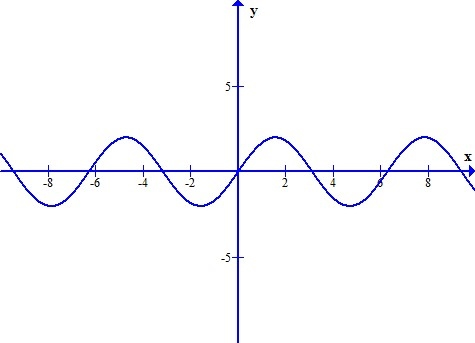The body is in the periodic motion if the motion is executing and repeating after the equal time intervals, such as the rocking chair and swing in the motion. The periodic function can be defined as the function returning to the same value at regular intervals. Though the periodic motion sounds similar to the oscillatory motion, it has the major difference from the oscillator motion as it is related to any motion that is repeated over time. All of the periodic motions can be defined by the periodic function. The formula for the periodic function is as below.
f (x+P) = f (x)

Types of Periodic Functions
The trigonometric functions are the most famous periodic functions. However, in nature, some examples of the periodic functions are sound waves, light waves and the phases of the moon. When these are graphed on the coordinate plane then a repeating pattern is obtained on the same interval which makes the prediction of the periodic functions much easy. The period for the period function is actually, the interval between the two matching points placed on the graph. In other words, it can be said that it is the distance along the x-axis, that the function must have to travel before it can start repeating its pattern. The period for the tangent is π whereas the cosine and basic sine functions have a period of 2π.
Periodic Function and Fourier Series
The Fourier series is nothing else but an extension of the periodic function in the standings of an infinite sum of sine and cosine. Mathematically, the Fourier series can be defined as a function of the displacement such as the frequency, phase, or amplitude versus the time. With the increase in the number of the calculated terms in the Fourier series, the series is the more and more close approximation of the exact function that defines the complex signal waveform.

Real-World Examples of Periodic Functions
Just like any other waveform, the sound waves consist of the frequency, amplitude, velocity, and wavelength. Based on the air temperatures these numbers vary greatly. The sound waves travel through the many materials including the steel and water and they are created through the vibrations. Most commonly, these waves are found to be traveling through the air and they are not capable to travel through the vacuum. These waves are characterized as mechanical waves as they are the disturbances transported through the medium.